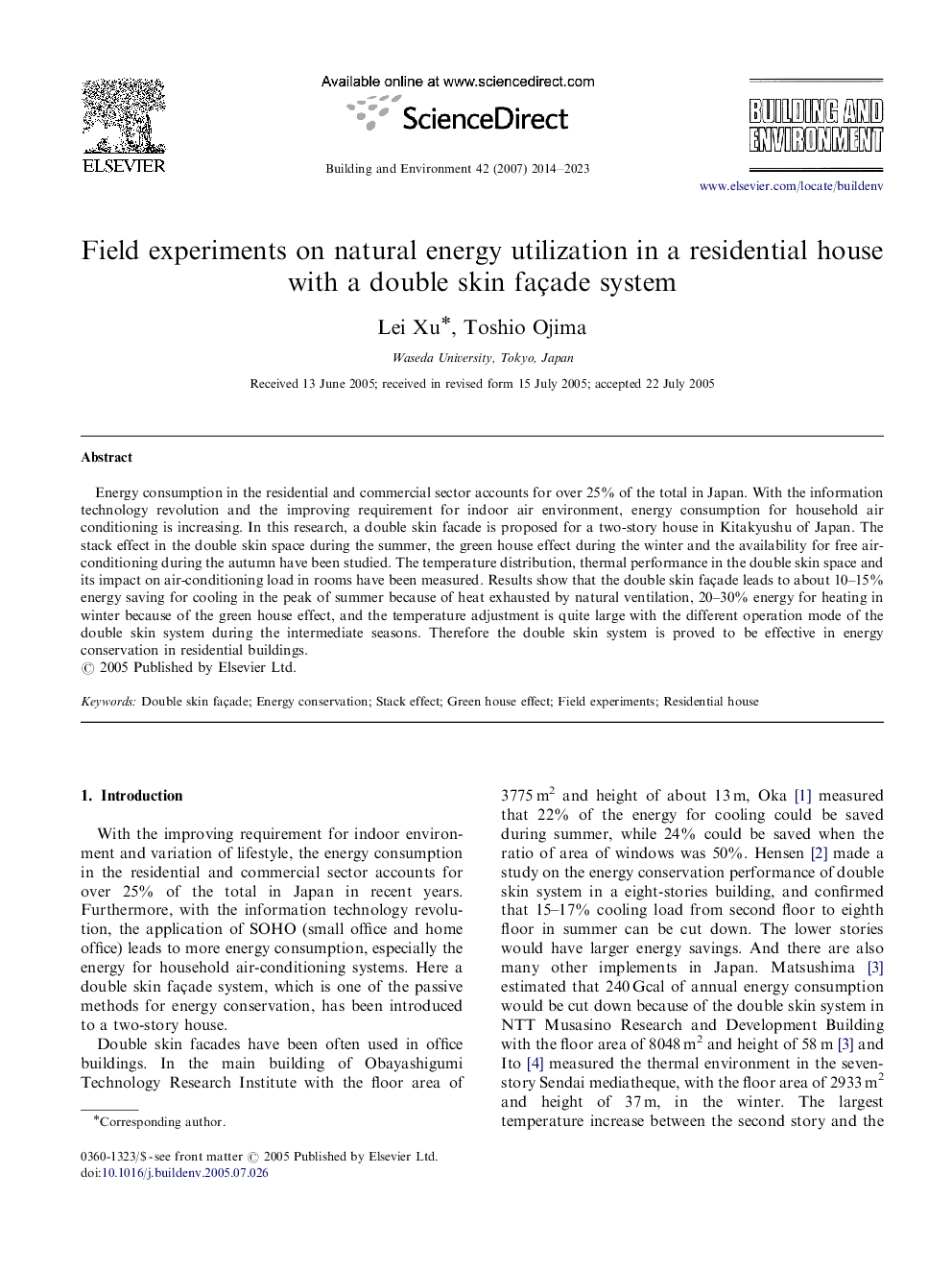| Article ID | Journal | Published Year | Pages | File Type |
|---|---|---|---|---|
| 250191 | Building and Environment | 2014 | 10 Pages |
Energy consumption in the residential and commercial sector accounts for over 25% of the total in Japan. With the information technology revolution and the improving requirement for indoor air environment, energy consumption for household air conditioning is increasing. In this research, a double skin facade is proposed for a two-story house in Kitakyushu of Japan. The stack effect in the double skin space during the summer, the green house effect during the winter and the availability for free air-conditioning during the autumn have been studied. The temperature distribution, thermal performance in the double skin space and its impact on air-conditioning load in rooms have been measured. Results show that the double skin façade leads to about 10–15% energy saving for cooling in the peak of summer because of heat exhausted by natural ventilation, 20–30% energy for heating in winter because of the green house effect, and the temperature adjustment is quite large with the different operation mode of the double skin system during the intermediate seasons. Therefore the double skin system is proved to be effective in energy conservation in residential buildings.
